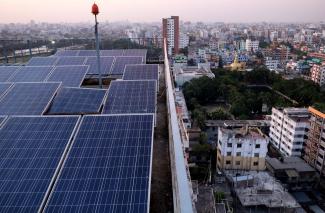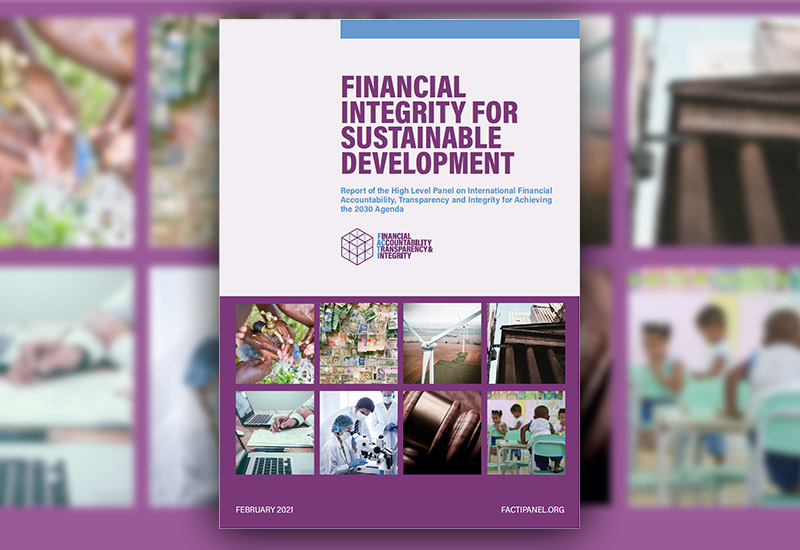Macroeconomics
Why central banks must pay attention to ecological risks

The impacts of global heating and nature loss can subvert both macroeconomic stability (stable output growth and stable prices) and financial stability (the effective and reliable functioning of the financial sector). While high-income countries have contributed most to causing the global environmental crisis, its consequences are particularly painful in emerging markets and developing countries. Accordingly, central banks and financial regulators (CBFRs) in low and middle-income countries are now facing the challenge of addressing related risks and impacts.
Many CBFRs, moreover, want to support national mitigation and adaptation efforts. They have thus started to explore how to nudge the financial sector towards more sustainable investments.
Five reasons
There are at least five reasons why CBFRs should be concerned with climate change, the loss of eco-systems and the related dwindling of biodiversity:
- The impacts affect CBFRs’ core mandate of safeguarding macroeconomic and financial stability. It is now widely recognised that the impacts of the global ecological crisis create financial risks that need to be mitigated. Moreover, it is increasingly well-documented that they can threaten macroeconomic and price stability. CBFRs must therefore understand these issues and deal with them appropriately.
- Central banks must consider the impact of climate- and nature-related risks on their own balance sheet. Central banks do not only use interest rates to control inflation, they also manage money supply by buying and selling financial assets. Their investment policies and collateral frameworks should thus take account of ecological risks, so they avoid purchasing hazardous assets. That approach will not only protect their own portfolio, but also provide useful incentives for the financial sector and the real economy. The reason is that an asset is more valuable and more attractive if financial institutions can use it in operations with the central bank.
- As all organisations must, CBFRs have to consider the potential impact of their own actions on the environment. This is particularly relevant in places where CBFRs are expected to support governments’ environmental policies.
- CBFRs contribute to shaping markets. For example, their prudential policies define what commercial banks must take into account when granting loans, issuing bonds or reporting to shareholders. CBFRs can oblige them to disclose climate and nature-related risks as well as account for potential impacts in their lending and investments. The inclusion of environmental dimensions in such requirements can help to make the financial system support the transition to environmental sustainability.
- CBFRs should lead by example. Therefore, they must themselves adhere to all standards they want others to observe.
Of course, government action remains crucially important. Government policies matter most, and CBFRs must support them. To what extent they can deliver, depends on their institutional mandates and the specific country context. However, CBFRs certainly have a role of their own in “greening” both the financial system and the real economy.
Emerging consensus
An international consensus has emerged that CBFRs need to consider the environment in the design of monetary policy and financial supervision. Doing so is part of their general mandate of safeguarding macroeconomic and financial stability (see Hans Dembowski on www.dandc.eu). This is acknowledged by the 121 CBFRs that belong to the Network of Central Banks and Supervisors for Greening the Financial System (NGFS).
The tasks of mitigating ecological risks and scaling up sustainable finance are closely interrelated. The latter task supports the former. To address ecological risks, prices must be set appropriately, which has implications for the allocation of credit. Lending to environmentally harmful activities must be reduced, while more lending to sustainable economic activities will help to reduce long-term physical risks. Indeed, CBFRs can make economies more resilient by supporting the financial sector’s alignment with climate and nature.
The toolbox at the disposal of CBFRs is potentially large. As a starting point, it includes standards, taxonomies and metrics that are used for disclosure rules and compliance obligations. By defining these well, CBFRs help the financial sector to identify, assess and tackle crucial environmental risks and impacts – and as a result, more capital will be invested in sustainable ways.
Moreover, CBFRs can promote the development of new green market segments. For example, they can create a regulatory environment that supports the issuance of – and trade in – bonds that meet environmental, social and governance (ESG) criteria (on the difficulties of adopting international standards see Kathrin Berensmann on www.dandc.eu).
Important new stress tests
CBFRs have also started to conduct climate and nature stress tests. These tests are meant to assess the vulnerability of financial institutions and the financial system in general. If a financial institution is found to be vulnerable to environmental shocks, it can be required:
- to enhance its environmental risk management practices,
- to assess and disclose such risks and/or
- to hold additional capital.
Such obligations make high-risk activities less attractive in financial terms. If, moreover, a commercial bank is systemically important, such rules can be tightened. For example, that institution can be required to build additional capital buffers. Rules designed to ensure the viability of a single bank are called “microprudential” and those that go further to safeguard the entire system are called “macroprudential”.
Central banks’ monetary policy should take environmental issues into account too. As argued above, central banks can exclude asset classes that harm sustainability from their collateral frameworks. Another option is to accept problematic assets at a below-market rate. Such central bank policies send strong signals, especially as commercial banks prefer assets that the central bank is willing to accept in principle. Furthermore, central banks can introduce special refinancing lines that make it easier for commercial banks to grant loans to low-carbon or otherwise sustainable projects.
It bears repetition that CBFRs should do what they preach. By disclosing climate or nature-related risks in own portfolios they will set good examples. That is also true when they adopt responsible investment principles for portfolio management.
Moreover, CBFRs can support the broader sustainability agenda through sustainable finance roadmaps or by providing advice to their government. They can also support related capacity building efforts in the financial sector, raising awareness of how environmental risks can harm macroeconomic and financial stability.
Particular urgency in developing countries
All CBFRs must ultimately rise to the multi-layered challenges of environmental, macroeconomic and financial stability. While the need to act is universal, the sense of urgency is strongest in developing countries and emerging markets.
- They are more exposed to the detrimental impacts of the global environmental crisis.
- Their investment needs are larger, while their financial systems are less developed.
Unsurprisingly, CBFRs in poorer world regions were among the first seeking to address environmental risks. Leaders include Bangladesh, Brazil, China and Lebanon.
That fits the pattern of CBFRs there typically playing a broader role in supporting government policies and development priorities. They have often taken a “developmental” stance. Accordingly, many of them are now tackling the financial and macroeconomic implications of the global environmental crisis in a pragmatic, hands-on way.
Many CBFRs in the global south have creatively adopted eco-friendly instruments and policies that may seem unorthodox to their counterparts in high-income countries. With the worsening global environment crisis causing stronger impacts, more CBFSs are likely to gear their policies and instruments to sustainability. Going forward, CBFRs will have to more systematically assess the effectiveness, efficiency, and equity of adopted measures. Doing so is part of their duty to safeguard macroeconomic and financial stability. It also serves to ensure that clearly defined policy goals are met while unwanted distortions are avoided.
Ulrich Volz is a professor of economics and directs the Centre for Sustainable Finance at SOAS, University of London.
uv1@soas.ac.uk














